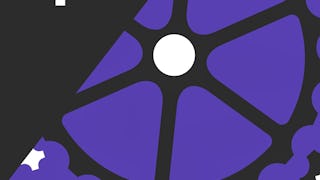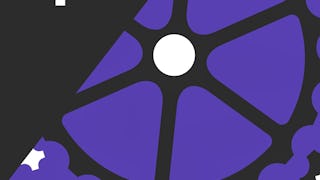If you’re ready to dive into the world of web development, this course is your launchpad. Whether you’re a graphic designer itching to build the sites you mock up, an instructional designer wanting to finesse HTML in your LMS, an entrepreneur looking to put your business online, or just developing skills for a side hustle—this course is for you. Taught by real-deal front-end developers who’ve cut their teeth on websites for top tech and e-tail companies, you’re learning from the best right here in Seattle.


Building Web Pages with HTML & CSS
This course is part of Front-End Web Development for Beginners Specialization

Instructor: University of Washington Team
2,172 already enrolled
Included with
(10 reviews)
Recommended experience
What you'll learn
In this course, you’ll learn essential front-end skills like HTML, CSS, and web page structure.
Skills you'll gain
Details to know

Add to your LinkedIn profile
10 assignments
See how employees at top companies are mastering in-demand skills

Build your subject-matter expertise
- Learn new concepts from industry experts
- Gain a foundational understanding of a subject or tool
- Develop job-relevant skills with hands-on projects
- Earn a shareable career certificate

There are 4 modules in this course
In this module, you will dive into the foundational concepts and tools essential for web development and version control, with a focus on preparing you for a potential role as a web developer. Whether you’re looking to pivot to a new career, take on a gig, or simply explore the web developer role, this module has you covered. You’ll start by learning about Git, a powerful version control system that helps you manage and track changes in your code. You’ll get hands-on experience using Git via the command line, navigating directories, initializing repositories, and committing changes. Next, you’ll explore GitHub, a web-based platform for hosting Git repositories, and learn how to link your local repositories to GitHub and push changes. The module also guides you through the basics of website architecture, teaching you how to create a simple HTML webpage with essential elements like the DOCTYPE declaration, head, body, and various HTML tags. Finally, you’ll delve into sectioning elements in HTML, such as header, footer, section, article, and aside, to effectively organize and structure your web content. Throughout the module, you’ll engage in practical activities to reinforce your understanding and build the skills necessary for a web developer.
What's included
4 videos7 readings2 assignments1 discussion prompt
In this module, you will gain the skills to enhance your web development projects by leveraging HTML and CSS effectively. You’ll learn to use semantic HTML elements, which not only improve the accessibility of your web pages but also boost their SEO performance by making your content more understandable to search engines. You’ll be able to analyze and optimize HTML code for accessibility, ensuring that images include descriptive alt text for screen readers and search engines. Additionally, you’ll learn how to format images, making sure they are both accessible and optimized for various devices. On the CSS front, you’ll start to transform the visual appeal of your web pages. You’ll start with the basics of CSS syntax and selectors, enabling you to apply styles to different HTML elements. As you progress, you’ll explore advanced CSS selectors, allowing you to target specific elements and apply unique styles, thus enhancing the functionality and aesthetics of your web projects. By the end of this module, you’ll be proficient in validating your HTML and CSS code to adhere to web standards and best practices, and you’ll be adept at using Git for version control, ensuring smooth collaboration and management of your web development projects.
What's included
4 videos4 readings2 assignments
In this module, you will enhance your competencies as a front-end web developer by mastering advanced CSS techniques and understanding their practical applications. You’ll start by learning about pseudoclasses and attribute selectors, which allow you to style elements based on their state or attributes, such as when a user hovers over an element or when a link has been visited. This knowledge will enable you to create more interactive and user-friendly web pages. Next, you’ll delve into the world of colors, exploring various color systems like hexadecimal, RGB, and HSL. You’ll learn how to apply these color values to your CSS, giving you the ability to create visually appealing and accessible designs. Understanding these color systems is crucial for ensuring your web pages look great across different devices and browsers. You’ll also learn about borders and how to use them effectively to enhance the layout and design of your web pages. By mastering border properties, you’ll be able to create well-defined sections and visually distinct elements, improving the overall user experience. Finally, you’ll explore CSS precedence, a fundamental concept that determines how conflicting CSS rules are applied. Understanding CSS precedence will make you a more effective coder, helping you debug and resolve styling issues efficiently. This knowledge is essential for maintaining clean and manageable code, especially in larger projects.
What's included
5 videos5 readings3 assignments
In this module, you will take a significant step forward in your journey as a front-end web developer by moving from writing single-page HTML files to creating more complex websites using external CSS files. This transition is crucial as it allows you to apply consistent styles across multiple web pages efficiently, making your projects more scalable and maintainable. You’ll start by learning how to link external CSS stylesheets to your HTML files, a practice that streamlines your workflow and ensures a cohesive design throughout your website. This foundational skill is essential for developing more sophisticated and professional web projects. Next, you’ll delve into the CSS box model, which is fundamental for controlling the layout and appearance of HTML elements. By mastering the box model, you’ll be able to manage spacing, borders, and padding effectively, creating well-structured and visually appealing web pages. You’ll also explore CSS positioning properties, enabling you to place elements precisely on the page. This knowledge is vital for designing complex layouts and ensuring that your web pages are both functional and aesthetically pleasing. Additionally, you’ll learn about font styling, including how to specify font families, control font weight and style, and set font sizes using various units of measurement. This will enhance the readability and visual appeal of your web content. Finally, you’ll discover how to host your websites using GitHub Pages, a free and integrated hosting solution. This will allow you to make your projects live on the internet, providing you with a professional platform to showcase your work and share it with others. By the end of this module, you’ll have the skills to create more complex and professional websites, taking your web development capabilities to the next level.
What's included
5 videos6 readings3 assignments1 peer review1 discussion prompt
Earn a career certificate
Add this credential to your LinkedIn profile, resume, or CV. Share it on social media and in your performance review.
Instructor

Offered by
Explore more from Mobile and Web Development
 Status: Free Trial
Status: Free TrialBoard Infinity
 Status: Free Trial
Status: Free Trial
Why people choose Coursera for their career




Learner reviews
10 reviews
- 5 stars
70%
- 4 stars
10%
- 3 stars
10%
- 2 stars
10%
- 1 star
0%
Showing 3 of 10
Reviewed on Dec 3, 2025
This course was by far the best so far on Coursera. Though some others were valuable, this one was engaging and challenging. I highly recommend this course to anybody.

Open new doors with Coursera Plus
Unlimited access to 10,000+ world-class courses, hands-on projects, and job-ready certificate programs - all included in your subscription
Advance your career with an online degree
Earn a degree from world-class universities - 100% online
Join over 3,400 global companies that choose Coursera for Business
Upskill your employees to excel in the digital economy
Frequently asked questions
To access the course materials, assignments and to earn a Certificate, you will need to purchase the Certificate experience when you enroll in a course. You can try a Free Trial instead, or apply for Financial Aid. The course may offer 'Full Course, No Certificate' instead. This option lets you see all course materials, submit required assessments, and get a final grade. This also means that you will not be able to purchase a Certificate experience.
When you enroll in the course, you get access to all of the courses in the Specialization, and you earn a certificate when you complete the work. Your electronic Certificate will be added to your Accomplishments page - from there, you can print your Certificate or add it to your LinkedIn profile.
Yes. In select learning programs, you can apply for financial aid or a scholarship if you can’t afford the enrollment fee. If fin aid or scholarship is available for your learning program selection, you’ll find a link to apply on the description page.
More questions
Financial aid available,



